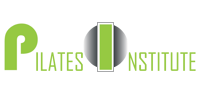Pilates on the Run Q & A’s
Pilates on the Run
BY DANIEL WILSON
Pilates armwork exercises are great for this because they strengthen the mid back and the neck extensors so that a runner can hold up the head more easily.
Q: You’ve mentioned long distance running, what about sprinters? Can Pilates help?
A: Absolutely. Sprinters predominantly run on their toes. When you do that you tend to run more from your calf muscles as opposed to running from your heels and quads. That really shortens the calves. So sprinters need really strong and elongated soleus and gastrocnemius muscles. They can do things like lie supine and push off the Reformer jumpboard, or do heel drops on the footbar of the Reformer. This allows to them to stretch the calves in a non-weight-bearing position.
Q: Pilates is known as a mind-body exercise. How does the “mindbody” component help?
A: There is a natural mind-body relationship between Pilates and runners. Pilates can teach them to be more kinesthetically focused – how the head is balanced on the neck and spine, how the feet feel on the ground, whether they are running in the proper sequence, as well as breathing patterns. It is being aware of the body and how it moves in space. This can defi nitely improve performance.
Q: What kind of Pilates equipment do you recommend for trainers and coaches working with runners?
A: Most people associate Pilates with either a mat or the Reformer; both are great. But lately I’ve really been using the Pilates Chair. It provides an absolutely kick-butt strengthening workout for athletes. And now some Pilates manufacturers have redesigned the Chair to include attachments for resistance tubing. This allows runners to push and pull off the chair. It also expands the exercise repertoire to include work that could previously be done only on a Reformer. This is great for trainers who want to implement an equipment-based Pilates training program but may not have the space for Reformers.
Selected Pilates Exercises for Runners
An exercise on the Pilates Chair – STEP DOWNS
Goal: Strengthen quads, hamstrings, glutes, abs, ankles and teach pelvic stability. Stand on the seat facing away from the pedal. Bend the front leg to 90 degrees, round the spine and place the back leg on the pedal. Press down the pedal with the back leg.
An exercise on the mat: SWIMMING
Goal: Strengthen back and hip extensors, including the erector spinae, hamstrings and gluteus maximus. Lie prone on the mat with the arms reaching overhead and legs straight. Reach one leg and the opposite arm out and up toward the ceiling. Switch the arm and leg quickly without losing the balance on the center of the torso.
Daniel Wilson is a freelance writer specializing in fitness articles.
Due to the repetitive nature of competitive running and the tremendous force put on the body, injuries to can be commonplace. The body works on a closed chain system when running. If the body is misaligned this chain can be interrupted or thrown out of balance, which can lead to injuries anywhere along that chain – from the ankles on up to the neck. Pilates is one method that trainers use to help athletes run more eff ectively. The core stabilizing principles of Pilates focus on creating an even musculature. An evenly developed body gets its power from the core and then transmits energy out to the extremities. The end result is a body that moves with maximum efficiency. And a body that moves efficiently can not only shave valuable seconds off a time, but do it without getting hurt.
Barbara Wintroub is the owner of Retrofit Pilates Rx in Santa Monica, CA. She has worked in the medical field of Pain Management and is certified through theAmerican Academy of Health, Fitness and Rehabilitation Professionals (AAHFRP) as a Medical Exercise Specialist. An avid marathoner who has competed all over the world, Wintroub has worked and trained with many competitive runners and feels Pilates is a phenomenal form of conditioning. Here’s what she had to say when asked how Pilates can help a runner.
Q: We all know that runners oft en get muscle-related pulls and tears. What other injuries do you commonly see in competitive runners and how can Pilates help?
A: Lately I’ve seen a lot of bad strains to the IT bands – particularly in cross-country or off -road runners. This can happen due to a variety of circumstances like a leg length discrepancy or running on a slanted surface, and end up causing major irritation on the lateral side of the kneecap. It’s extremely painful and can become chronic. Pilates has some incredible exercises – like side stretches over the short box on the Reformer- that can give a runner a fantastic stretch and elongation of the IT band. I’ve also seen a lot of shoulder injuries to long distance runners. Think about it – your arms weigh around 3 lbs. apiece, and your head weighs about 8 or 9 lbs. If that weight causes you to hunch forward – even slightly – you’ll have a tendency to let your head and arms hang which will greatly aff ect your neck and shoulders.
BalancedBody
